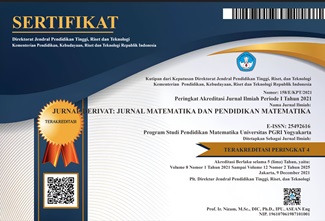Penerapan Blended Learning Untuk Peningkatan Kemandirian Belajar Dan Critical Thinking Mahasiswa
DOI:
https://doi.org/10.31316/j.derivat.v5i2.138Abstract
This study aimed to improved understand independency enhancement and critical thinking of learning students through based blended learning. This research combines classroom action research which refers to Stephen Kemmis and Robin Mc Taggart. This research subject were students of engineering information STMIK Duta Bangsa period 2017 / 2018. This research was conducted in two cycles and each cycle was done in two meetings. Every cycle consisted of 4 steps are preparation, action, observation, evaluation, analysis, and reflection. The subject of this research is the students who took Calculus 1. The technique of collecting data was done by assessing test result and observation, test instrument, observation sheet, and field notes. The data was analyzed by using quantitative-descriptive approach. The study showed that the strategy of blended learning proved to be succeeded in increasing understand independency enhancement and critical thinking of learning students through based blended learning in Calculus 1. This is based on the occurrence of (1) increasing of independency enhancement a rise in their ability college student in learning one who is an independent study prior to the adoption of blended learning is as much as 11,2 % and after the cycle of come to an end the application of blended learning was recorded at 88,8 %. (2) increasing in their ability college students to critical thinking between prior to the adoption of blended learning is as much as 12,4 % and over the course of his shift to be over the application of a notebook detailing the development strategy blended learning was recorded at 91,2 %
Keywords: Blended Learning, independent learning, critical thinking
Downloads
Published
Issue
Section
Citation Check
License
Authors who publish with this journal agree to the following terms:
-
Authors retain copyright and grant the journal right of first publication with the work simultaneously licensed under a Creative Commons Attribution-ShareAlike 4.0 International License that allows others to share the work with an acknowledgment of the work's authorship and initial publication in this journal.
- Authors are able to enter into separate, additional contractual arrangements for the non-exclusive distribution of the journal's published version of the work (e.g., post it to an institutional repository or publish it in a book), with an acknowledgment of its initial publication in this journal.
- Authors are permitted and encouraged to post their work online (e.g., in institutional repositories or on their website) prior to and during the submission process, as it can lead to productive exchanges, as well as earlier and greater citation of published work (See The Effect of Open Access).







